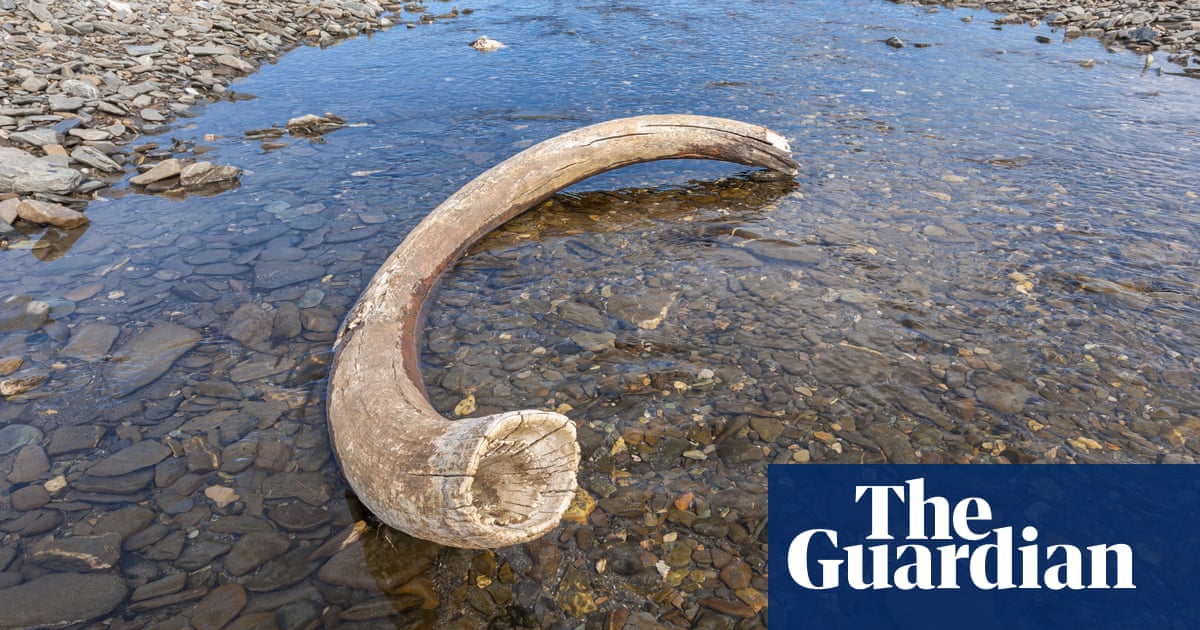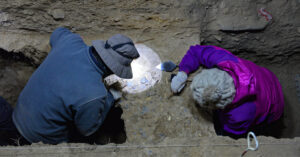The last woolly mammoths on Earth took their final stand on a remote Arctic island about 4,000 years ago, but the question of what determined their fate remains a mystery. Now, genetic analysis suggests that a freak event like an extreme storm or plague is to blame.
The findings contradict a previous theory that deleterious genetic mutations caused by inbreeding led to “genomic collapse” in the isolated population. The latest analysis confirms that although the group had low genetic diversity, a stable population of several hundred mammoths inhabited the island for thousands of years before suddenly disappearing.
“We can now confidently reject the idea that the population was simply too small and that they were doomed to extinction for genetic reasons,” said Prof. Lav Dahlen, an evolutionary geneticist at the Center for Paleogenetics, run jointly by the Swedish Museum of Natural Sciences, History and Stockholm University. “That means it’s probably just some random event that killed them off, and if that random event hadn’t happened, then we’d still have mammoths today.”
Woolly mammoths once roamed the vast expanses of the Ice Age in Europe, Asia, and northern North America. After the global climate began to warm about 12,000 years ago, and as human hunters posed an increasing threat, they retreated north and died out on the continent about 10,000 years ago. Rising sea levels cut off Wrangel Island’s small population, which survived for another 6,000 years.
Dahlen and colleagues analyzed the genomes of 13 mammoth specimens found on Wrangel and seven earlier specimens excavated on the continent, spanning a period of 50,000 years.
The findings, published in Cell, reveal that Wrangell’s population has gone through a severe hardship, reduced to just eight breeding individuals at a time. But the group recovered to a population of 200-300 within 20 generations, which appears to have remained stable until the very end.
Compared to their mainland ancestors, the Wrangel Island mammoth genomes show signs of inbreeding and low genetic diversity, including in genes known to play critical roles in the vertebrate immune response. This suggests that the group would be more vulnerable to new pathogens such as plague or bird flu.
“Mammoths are an excellent system for understanding the ongoing biodiversity crisis and what happens from a genetic perspective when a species goes through a population bottleneck, because they mirror the fate of many modern populations,” said Marian Dehask of Uppsala University, first author of the paper .
after the promotion of the newsletter
Dr. Vincent Lynch, a biologist at the University at Buffalo who was not involved in the research, said the findings provide new insights into the last days of mammoths and raise the possibility that a genetically compromised group was unable to respond to environmental change such as a new pathogen.
“Extinction, at least when it’s not at the hands of humans, is usually not the result of just one cause,” he said. “This is the result of a combination of factors such as inbreeding, small population size, accumulation of deleterious mutations and sometimes bad luck.”



